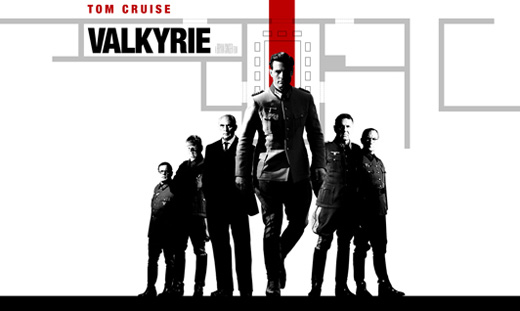
In a previous article, I wrote about July 18, 1936, the beginning of the Falangist-military uprising in Spain and the Spanish Civil War. There was another tragic anniversary this week: That of the July 20, 1944 attempt to kill Adolf Hitler and overthrow the Third Reich. This too should be remembered.
Briefly, the facts: On July 20, 1944, an officer of the German Army General Staff, Colonel Count Klaus Schenk von Stauffenberg, managed to place a briefcase containing bomb under a table in Adolf Hitler’s headquarters in the “Wolf’s Lair” at Rastenberg, in East Prussia. Hitler was supposed to participate in a military briefing at that place and time, and the colonel managed to place the bomb in such a way that when it exploded, the Fuehrer would certainly have been killed.
The bomb was placed and von Stauffenberg, who had managed to slip out of the building, was able to confirm the explosion. He hastened back to Berlin to take charge of a group of men who were prepared to neutralize other leaders, take over the government and begin to end the nightmare of the Third Reich. Unfortunately another officer had moved the briefcase, and when the bomb exploded, it killed several officers but left Hitler shaken but not seriously injured.
Meanwhile, people who were in on the conspiracy had moved to arrest top Nazi leaders such as Propaganda Minister Josef Goebbels, and take over key components of the German state. But when the news got out that Hitler was alive, the plot fell apart. The officer who had been sent to arrest Goebbels, Major Otto Remer, found himself talking on the phone in the Propaganda Minister’s office with a very much alive and enraged Adolf Hitler; he and others then turned against the July 20 conspiracy leadership. Some of them committed suicide, and others were arrested. Stauffenberg and a small group of fellow officers were put up against a wall and shot by firing squad; the colonel’s last words being “Long live our sacred Germany”.
In the reprisals that followed, several thousand persons were killed by the vengeful Nazis, or committed suicide to avoid such a fate. The dead included three field marshals (Rommel, von Kluge and von Witzleben, with the first two committing suicide), a number of top generals and other officers, as well as civilian political leaders. German high society was not spared: The executed included a number of counts and barons as well as other members of the social elite of the old pre-Nazi era (this in spite of the fact that so many aristocrats had supported the Nazis). Sadistic methods were used in some of the executions, which were filmed for Hitler’s personal entertainment. Children of the dead were separated from the families and taught to hate their parents as traitors. After the war, it took a long while for Germans to see Stauffenberg and his colleagues as heroes.
The people who carried out or supported the effort to get rid of Hitler were a very mixed bag. Most could be called conservative German nationalists. Some acted from religious convictions, either Catholic or Protestant. Unlike the dynamic and charismatic Colonel von Stauffenberg, many of the top army officers, although they had been grumbling about Hitler for years, only acted when it was clear that Germany would lose the war, with bad consequences for them personally. Meanwhile millions died, and these officers sealed their own fates by their dithering and hesitation.
A big fear was that the real winner would be the Soviet Union, and many of the plotters entertained the illusion that once they took over the government, they could negotiate a peace with the Western Allies but not with Moscow. But things had gone too far for that. Some of the plotters had been ardent Nazis before the scales fell from their eyes, either because they had an attack of conscience, or because they realized that Hitler was destroying their country and endangering their own future survival. A very few of the plotters had connections to the suppressed labor unions. Although German communists played a role in other resistance efforts, they were not a part of the July 20 plot, though they certainly were active in other resistance activities. Some members of the Social Democratic Party (SPD) were involved with July 20, and lost their lives too.
Yet we should remember that when these deeply flawed people acted, they did so knowing that they were very likely sealing their own death warrants, and indeed most of them gave their lives. At least some, especially young army officers, appear to have been genuinely horrified by the atrocities that they saw the Reich army and the Nazi SS and Einsatzgruppen committing on the Eastern Front. Several young officers volunteered to try to kill Hitler by methods that they themselves knew they could not survive-by suicide bombing or by shooting him in front of his armed-to-the-teeth bodyguards.
The success of the July 20 plot would have saved countless lives; among other things the conspirators would almost surely have tried to end the Holocaust, which was well underway. The failure of the attempt condemned millions more to die.
So, although there were elements of farce in the July 20 action, July 20 should be remembered as a tragic anniversary also.
One lesson: Flawed people finally acting, albeit on the basis of decidedly mixed motives, sometimes achieve more than perfect people doing nothing.
A second lesson: The July 20 plotters would never have got as far as they did were it not for the fact that a number of them held key positions in the armed forces. Colonel von Stauffenberg, for example, was in charge of units of reserve troops which he planned to use to overthrow the regime once Hitler was dead.
Another lesson: Never again.
Video: Trailer for the film “Valkyrie.” The German army plot to assassinate Hitler was the subject of this popular movie.
Photo: Image from the film “Valkyrie.”










